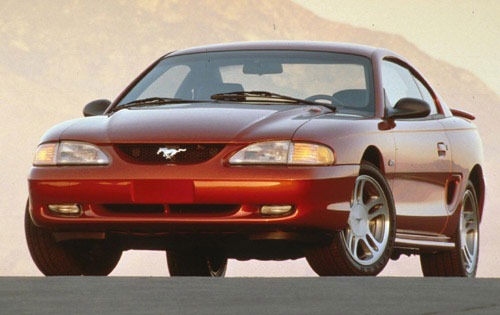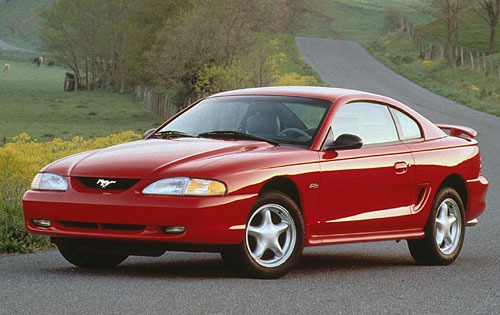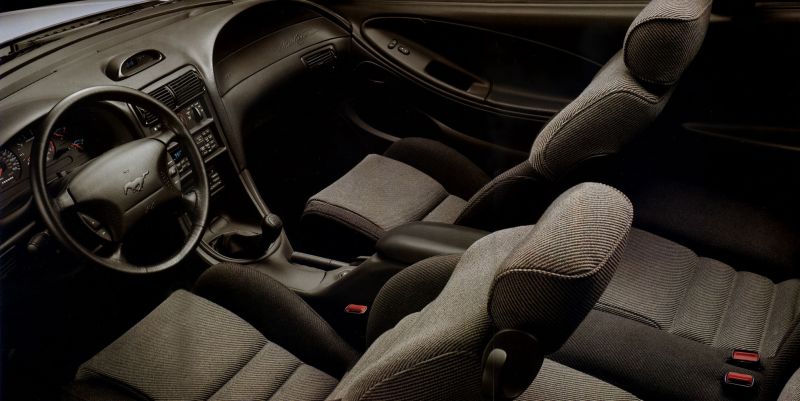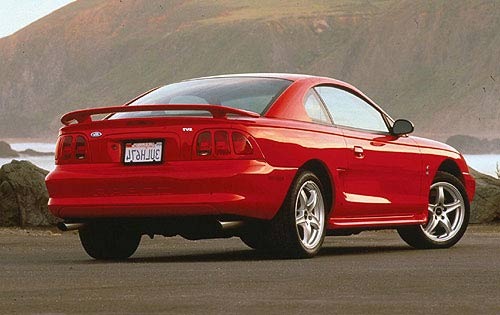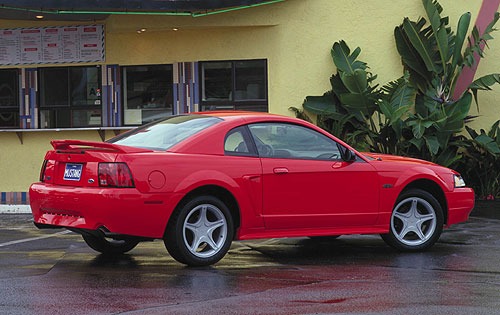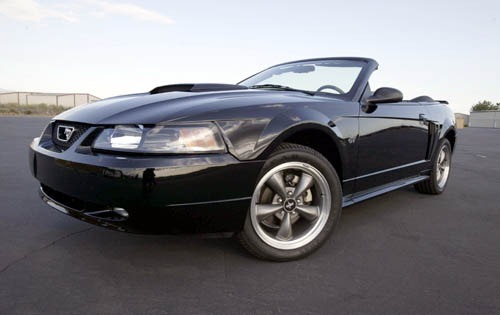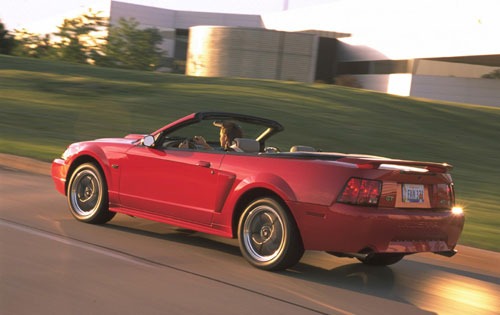Right now, the hot old Mustang to have seems to be the 1987-1993 “Fox Body.” Vanilla Ice rapped about them, they were light, Ford made a lot of them and the aftermarket really supported them. For a while, they were cheap. However those days have passed if you have looked into getting a used Fox Body you likely have been surprised at their sudden rise in value. Truthfully, Fox bodied Mustangs were actually produced from 1979 to 1993, but the one that everyone seems to want is the 1987 and up facelifted version with a 5.0, whether it be a body-cladded up GT, or an LX with the optional same V8 as the GT trim. Lets not talk about the lesser engined versions, with the exception of the turbid SVO, because that was the closest thing the US got to a Cosworth Escort.
The reason that the 79-93 Mustang in know as the Fox Body, is that it initially used a shared platform of Ford’s that was know as the Fox platform. It was used on other models like the Fairmont, LTD II, Thunderbird, Cougar along with others. By the time the 1994 redesign came along, Ford continued to use the Fox platform for the new Mustang. Many small changes were made to the suspension, but for the most part it remained very similar to the previous model. What changed was a larger body that took styling cues from the original mustang, and a much nicer and also retro styled interior. I remember this ad for the SN-95 when I was a kid:
It was the first Mustang in over a decade to have a running horse in the grille! They also eliminated a V8 option for any trim less than GT. Frankly, it’s a much better looking Mustang than the outgoing model. The much loved Fox Body can be mistaken for a mid-80s Escort. At least the SN-95 looks like a sports car.
In 1994 and 1995, the old trustworthy 5.0 was available in the GT. In 1996, Ford fitted the new Modular 4.6 overhead cam V8. Both engines have their avid fans for all sorts of reasons. Neither are a bad choice.
Ford’s Special Vehicle Team (SVT) made a special cobra version of the SN-95. A hand built double overhead cam version of the modular 4.6 liter with bigger brakes and better suspension and upgraded interior parts were featured. These were among my favorites to drive back when I worked at the Ford dealer. They had a heavy clutch, liked to rev and sounded great.
In 1999, Ford introduced a facelifted version of the SN-95 that used Ford’s design language of the time called “New Edge.” Therefore, Mustang fans called this version the New Edge Mustang. It looked similar, however it lost the 1990s “everything must be rounded” look by creasing a few body panels. The interior stayed pretty much the same except for a few materials. Overall, the new look was well received. The biggest news in 1999 was that the 4.6 received a host of upgrades, most importantly the use of what Ford called PI heads. The result was a jump in horsepower from 225, to 260.
I drove a ton of these when I was a lot guy at the Ford dealer. They hold a special spot in my heart. Frankly, they weren’t the fastest, they handled ok, felt kind of light, had a weird driving position, but they made the right sound, and felt quick. I had also driven a few LS1 Camaro/Trans Ams of the era. They were indeed much faster, but felt heavy, were hard to see out of, and interiors that were pretty much creaking and falling apart when new. It’s like GM spent all of their money and time developing a drivetrain, and slapped together the rest of the car in a cool looking package with little thought. The Mustang of the same era although not as a German Sedan or a precision instrument like a Japanese car, felt like a more completely thought out car than the Transmarobird.
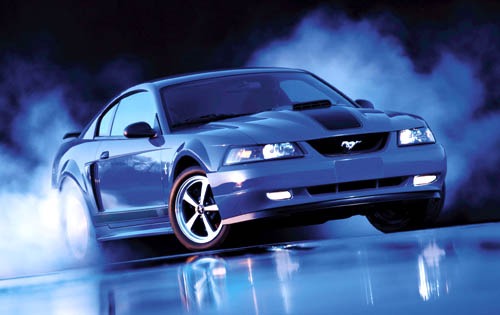
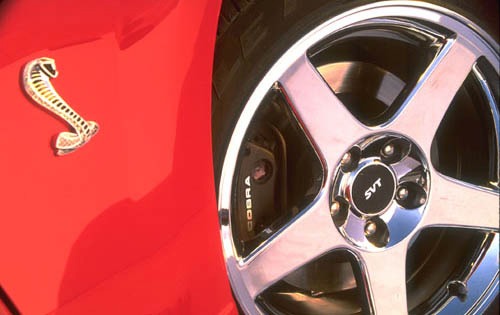



There were a lot of special editions of the New Edge Mustang that emerged. Initially, the 1999 Cobra trim had the same DOHC 4.6 claiming 320 horsepower. These were also the first Mustangs to be offered with independent rear suspension. However, owners found the ratting to be much lower than claimed when tested independently. Turns out that initially during testing the engines did make the claimed 320 horsepower. Apparently a decision was made somewhere in management that the exhaust headers cost too much to produce, so the production models were fitted with more restrictive cast iron manifolds that resulted in a power decrease. The result was no Cobra model for 2000, and a recall of all 1999s to have their manifolds replaced. In 2001 a tribute trim to the movie Bullitt was made. Is was basically a GT with a more open exhaust and unique interior. In 2003 a new supercharged SVT Cobra was released making 390 horsepower. At the same time the old Cobra engine was offered in a Mach 1 trim with the old manifolds making 305 horsepower.
The reason I am writing this is simple. These cars on the used car market represent tremendous value. They are front engined, rear wheel drive, relatively small, fun to drive cars that make the right sound, and are extremely cheap on the used car market. While eBay auctions are fetching astronomical numbers currently for fox bodies, go get a nice SN-95 for a song and enjoy it. Want to find a nice, clean, well maintained example? Look for an automatic convertible. They were a favorite among wealthy guys going through their mid-life crisis. If you can find a nice coupe with a manual grab it! Many of them have been owned by people who tastelessly modded, raced and generally ran them into the ground all while sporting ugly aftermarket head and taillights.
You may have also noticed that I made no mention of the lesser V6 model. Not only is the V6 model lame in general, but the engine used was the awful Essex V6 built in Windsor, Ontario, Canada. If you are fond of blowing head gaskets frequently. This is the engine for you!




